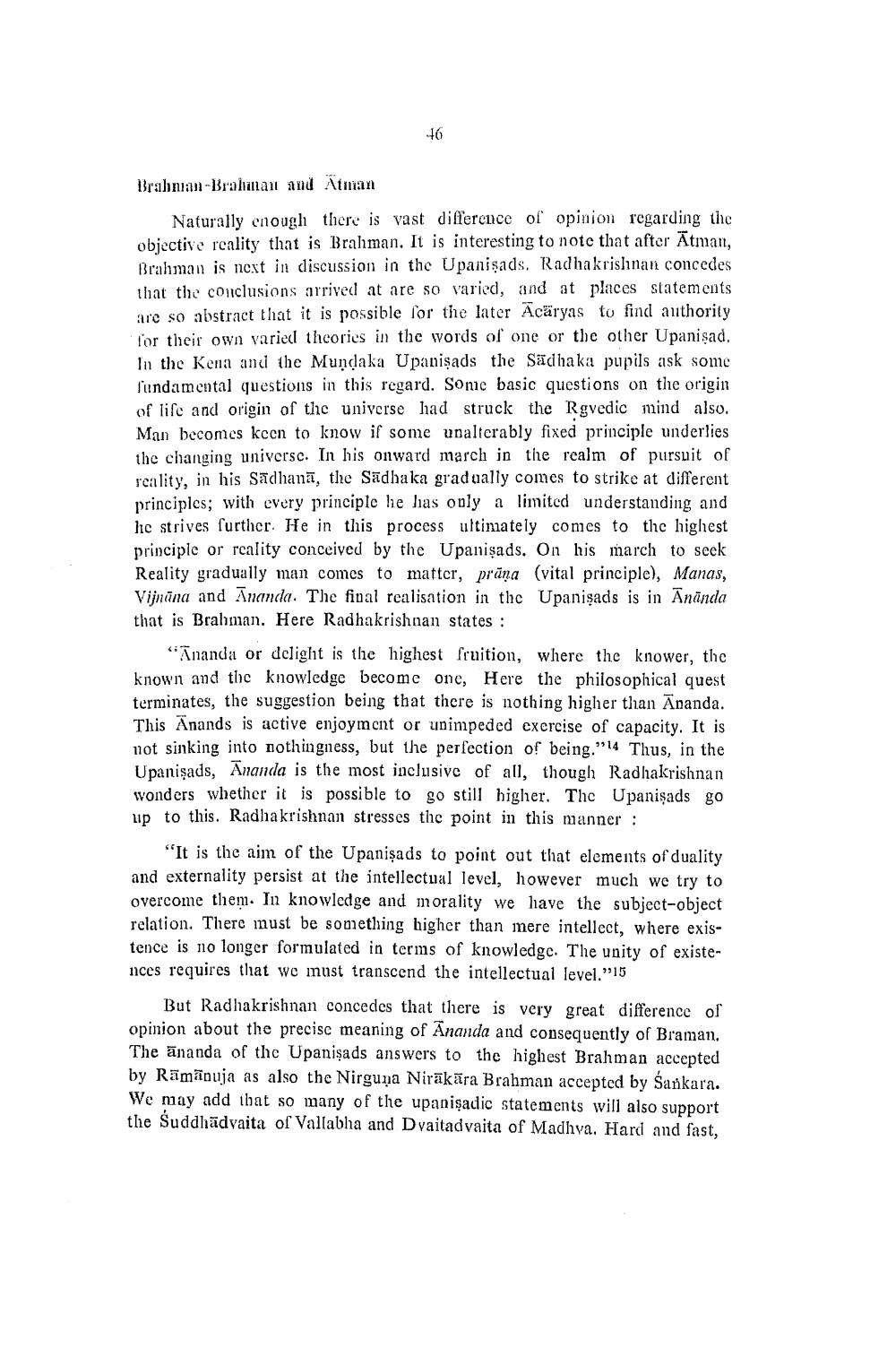________________
16
Brahna-Bralinan and Atman
Naturally enough there is vast difference of opinion regarding the objective reality that is Brahman. It is interesting to note that after Atman, Brahman is next in discussion in the Upanişads. Radhakrislinan concedes that the conclusions arrived at are so varied, and at places statements are so abstract that it is possible for the later Açüryas to find authority for their own varied thcories in the words of one or the other Upanişad. In the Kena and the Mundaka Upanişads the Sadhaka pupils ask some fundamental questions in this regard. Some basic questions on the origin of life and origin of the universe had struck the Rgvedic mind also. Man becomes keen to know if some unalterably fixed principle underlies the changing universe. In his onward march in the realm of pursuit of reality, in his Sadhanā, the Sādhaka gradually comes to strike at different principles; with every principle he has only a limited understanding and hic strives further. He in this process ultimately comes to the highest principle or reality conceived by the Upanişads. On his march to seek Reality gradually man comes to matter, prūna (vital principle), Manas, Vijnana and Ananda. The final realisation in the Upanisads is in Anānda that is Brahman. Here Radhakrishnan states :
"Ananda or delight is the highest fruition, where the knower, the known and the knowledge become one, Here the philosophical quest terminates, the suggestion being that there is nothing higher than Ananda. This Anands is active enjoyment or unimpeded exercise of capacity. It is not sinking into nothingness, but the perfection of being."14 Thus, in the Upanisads, Ananda is the most inclusive of all, though Radhakrishnan wonders whether it is possible to go still higher. The Upanişads go LD to this. Radhakrishnan stresses the point in this manner :
“It is the aim of the Upanişads to point out that elements of duality and externality persist at the intellectual level, however much we try to overcome them. In knowledge and morality we have the subject-object relation. There must be something higher than mere intellect, where existence is no longer formulated in terms of knowledge. The unity of existences requires that we inust transcend the intellectual level."15
But Radhakrishnan concedes that there is very great difference of opinion about the precise meaning of Ananda and consequently of Braman. The ānanda of the Upanişads answers to the highest Brahman accepted by Rämāpuja as also the Nirguna Nirākāra Brahman accepted by Sankara. We may add ibat so many of the upanişadic statements will also support the Suddhādvaita of Vallabha and Dvaitadvaita of Madhva. Hard and fast,




